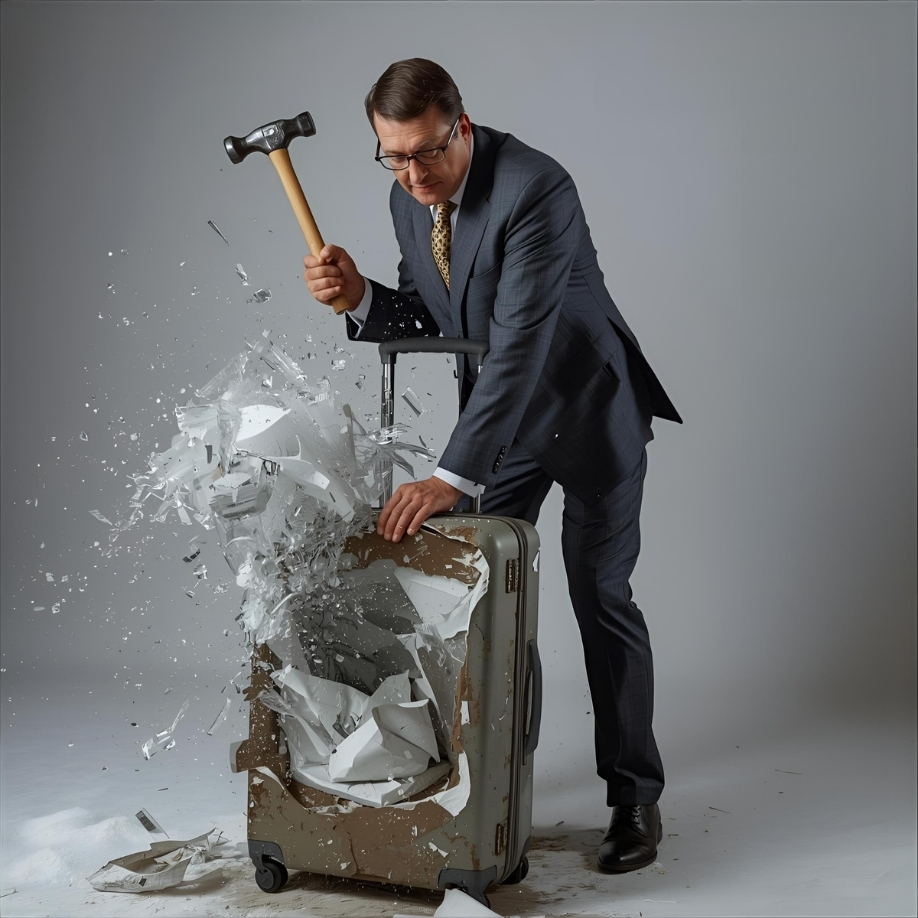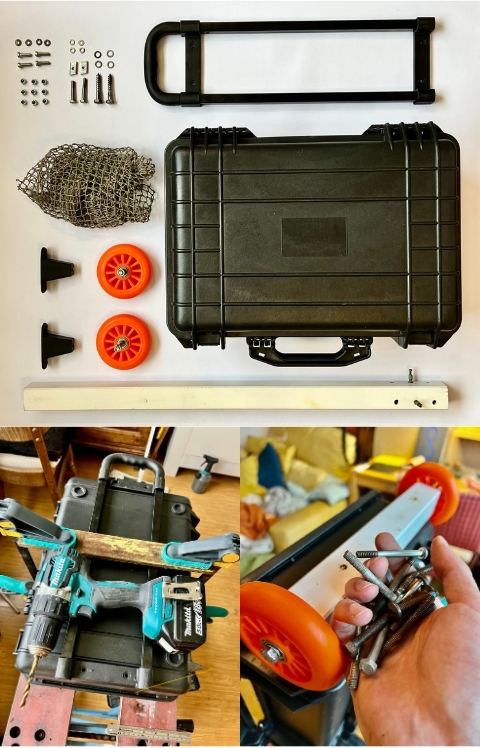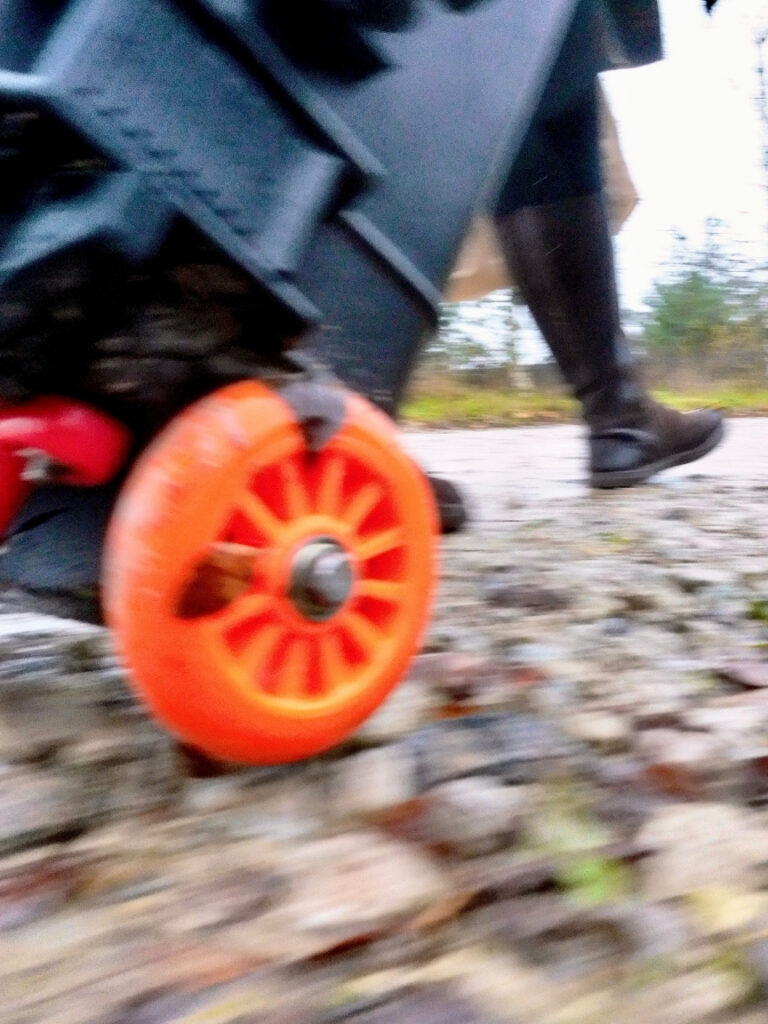A case against planned obsolescence.
After the Industrial Revolution, big industry had a problem: if they made everything to last indefinitely, the demand for products would stagnate. In our capitalist system, there is a need for constant growth, fuelled by the greed of our corporate elite. So roughly halfway through the last century, a number of solutions were found and perfected. This will not be an essay on all the ways demand was artificially created, so if you are curious about that, just ask AI.

No, this story is about a very specific type of evil:
planned obsolescence in the manufacturing of suitcases. My grudge is this: when a suitcase gets a bit damaged, when the wheel pops off, a zip breaks, or the retractable handle won't stay up anymore, the whole bloody thing turns into trash.
I could solve this problem with money and spend more than one thousand on a Rimowa case, but even then there is an issue: rolling suitcases are made for short walks on smooth surfaces. But the best adventures happen at the end of the paved road, where suitcase wheels start to make their death rattle.
An open-and-shut case.
So I decided to make my own. The first challenge was to find a case, preferably something cheap. So I looked on Marktplaats (the big Dutch second-hand platform) and found a perfect option close by. For €20 I got a sturdy BaseTech hardshell case made of polypropylene, which is repairable with heat if it were to break or crack. When I picked it up, I asked the seller what used to be in it. He smiled and said, "You may come in, if you want to see it." On a cabinet in his office was a strange box that looked like some sort of light, with water-cooling connections and a Philips logo on the bottom. He told me that this was a prototype he had worked on: a laser commissioned by Heidelberg, the offset printer giant. He explained that in the early 2000s, offset printing was replaced by laser and inkjet printing. In an attempt to make offset more viable, Heidelberg asked Philips to make a laser to flash-dry the prints at the end of the process. The laser worked, but it did not do much to save the future of offset printing. And so I walked out with a Philips Heidelberg laser case, how cool is that?

The design specifications:
- - Sturdy enough to keep valuables, like my camera, safe in any transit situation.
- - Well within the size limits of carry-on luggage.
- - Repairable with tools and parts found anywhere.
- - Fit for off-road walks.
- - Clamps and hinges, no zippers.
At the local second-hand store, I found a cheap broken Ikea suitcase, from which I salvaged the retractable handle. As you can see from the photo, it was a magically perfect fit. My good friend Billie had some wheels lying around and donated those for my project. The wheels were joined to the case with an old table leg, and everything was bolted together for easy future repairs.

Case closed

We traveled to the North a week later, and my new traveling companion behaved admirably. The wheels jumped over any terrain, the teapot I brought as a gift survived the flight, and above all, I felt super cool walking around with this nifty creation.

There are a few things to add in the future, pictures will follow when I’ve made the following upgrades:
- - A top handle to lift the case up stairs more easily.
- - Travel dates and destinations engraved on the inside of the lid.
- - A 'Philips Heidelberg Laser' logo on the front.
- - A more solid stand for keeping it upright.
I love the feeling of emancipation that comes from making your own stuff, especially when you end up with something better than what's available for sale. Next year I will make a check-in suitcase, maybe something that can turn into a bicycle or that folds out into a mobile workshop?
